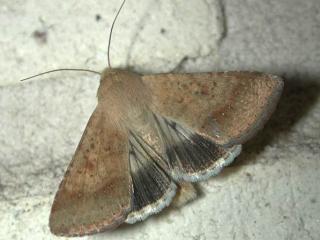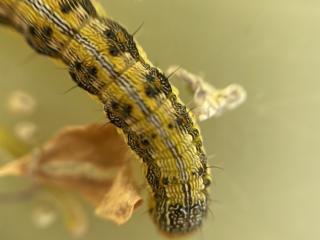Native budworm are active early
- Nolba
- Marrah
- Moonyoonooka
- Wicherina
- Southern Cross
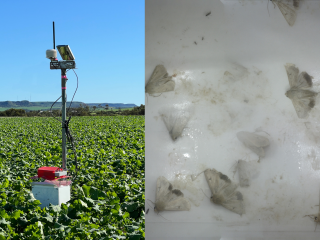
Native budworm moths have recently been detected as bycatch in the Department of Primary Industries and Regional Development (DPIRD)’s automated Diamondback moth (DBM) traps. This is surprising, as DBM traps are not designed to attract native budworm moths. This may indicate that large numbers of DBM are present and are randomly flying into traps.
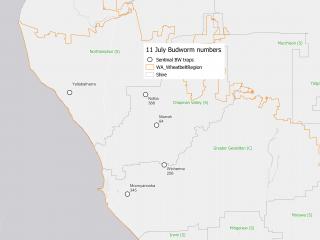
DPIRD staff responded by setting up five sentinel native budworm traps in the Geraldton zone ahead of the planned July to October trapping network. Early budworm flights were detected over a two week period. 345 native budworm moths were caught at Moonyoonooka, 256 moths at Wicherina, 84 moths at Marrah and 388 moths at Nolba.
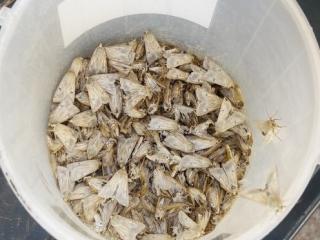
At the Moonyoonooka trapping site, very low numbers of native budworm caterpillars were sweep netted in the canola paddock, with less than one caterpillar per 10 sweeps. Staff did not find caterpillars at the other trapping sites.
Six native budworm moths have also been captured in a trap near Southern Cross.
The high numbers of moth captures are of concern and indicate that native budworm moths have begun to migrate into the grain growing areas in the northern and north eastern grainbelt areas, and are likely to have already started laying eggs onto crops. Native budworm moths migrate long distances annually from the north and eastern pastoral areas, moving south and west into the grainbelt.
Growers will need to be vigilant over the next couple of weeks by checking their lupin, canola and pulse crops for the presence of native budworm caterpillars. Serradella, lucerne, clover and annual medic seed crops should also be checked.
During average spring temperatures, it takes about seven days for any native budworm eggs laid on crops to hatch into caterpillars. It then takes a further two weeks for the caterpillars to grow to about 5mm, when they can then be detected in sweep nets. With cooler winter temperatures prevailing in many areas, the caterpillar life cycle is likely to take longer than three weeks to reach the size of 5mm.
The small caterpillars will cause minor leaf damage that is not obvious, such as tiny holes chewed into leaves. This means that they can initially go unnoticed if crops aren’t being checked with a sweep net. The young caterpillars feed on leaf or pod material for about two weeks before they become large enough (5mm long) to be noticed in the crop.
However, as the caterpillars get larger they can cause severe damage particularly if they coincide with pulse crops budding, flowering or early pod formation.
It takes a further four weeks until they are fully grown (40mm) which is about seven weeks from the time of egg laying. These development times are based on average spring temperatures, and while temperatures are still relatively warm in the northern agricultural region, these development times will be extended in areas experiencing cooler winter temperatures.
A mapped view of the native budworm trap captures is available at Cesar Australia’s MothTrapVisWA page. Viewers need to select the desired trapping date range.
Detailed information on this pest can be found at the department’s Management and economic thresholds for native budworm.
Pesticide options for the control of native budworm can be found in DPIRD’s 2023 Winter Spring Insecticide Guide.
For more information contact Technical Officer Alan Lord, South Perth on +61 (0)8 9368 3758 or +61 (0)409 689 468.
Article authors: Alan Lord (DPIRD South Perth) and Christiaan Valentine (DPIRD Northam).
Article input: Bec Severtson (DPIRD Northam).

